(Easter Sunday-Year B; This homily was given on March 30, 2024 at Saint Augustine Church in Providence, Rhode Island; See Genesis, Exodus, Isaiah, Baruch, Ezekiel, Romans 6:3-11 and Mark 16:1-7)
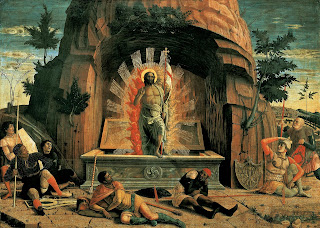
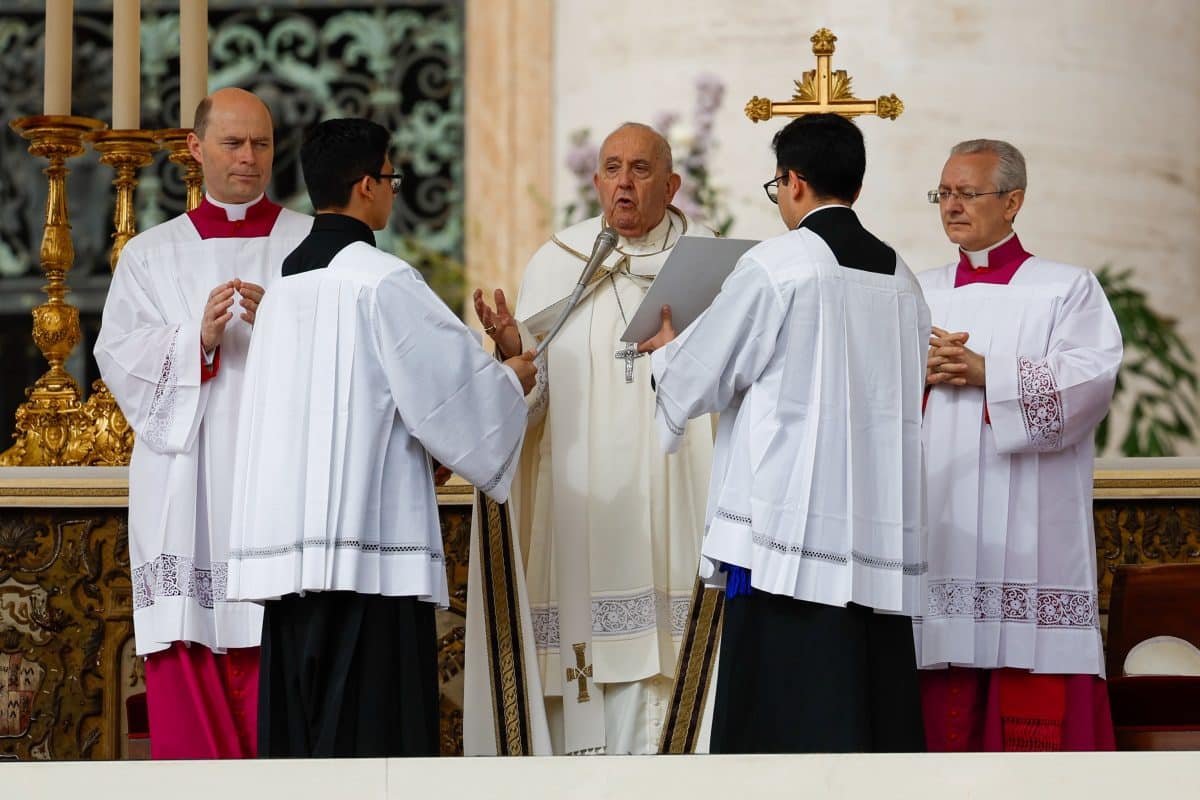
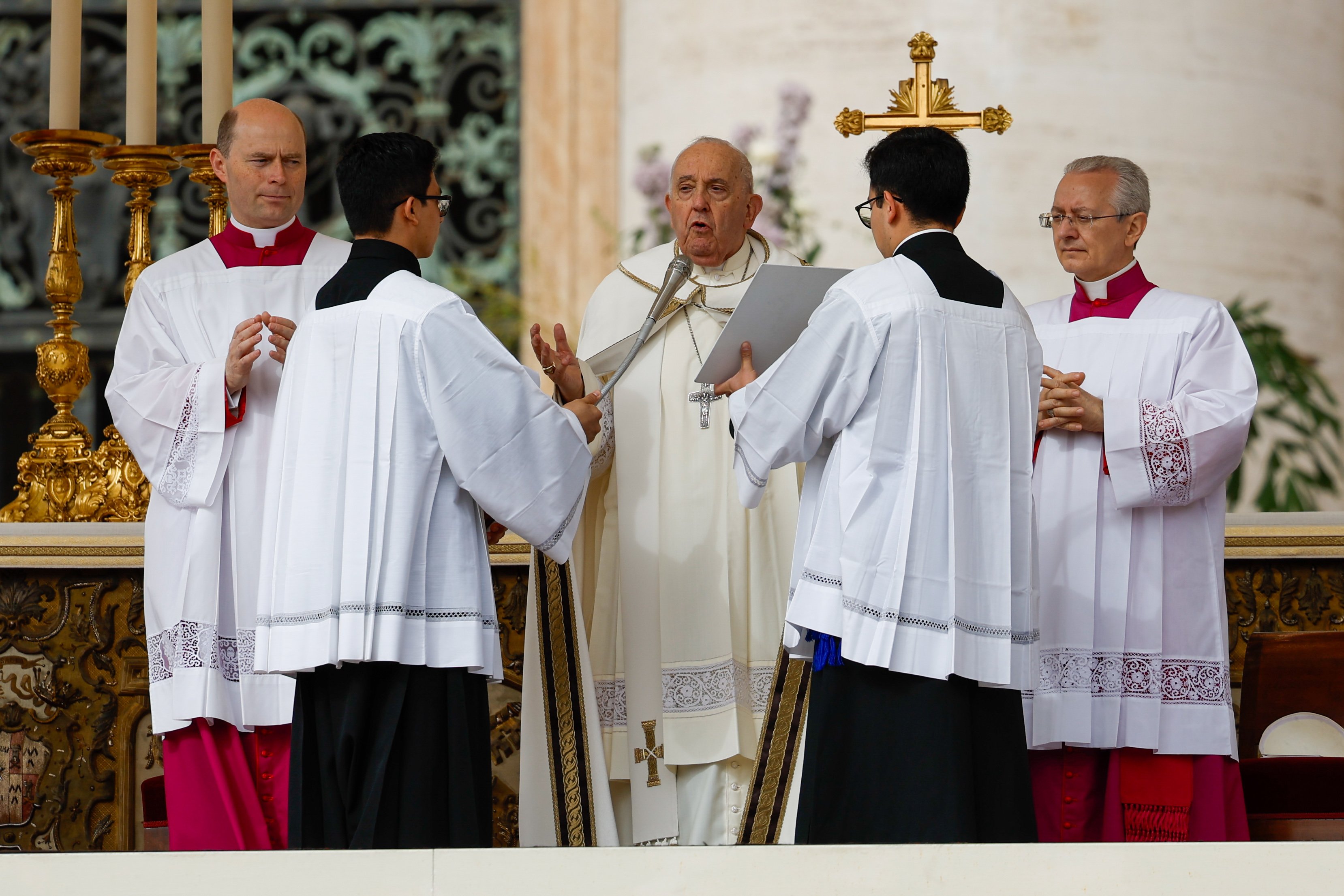
Pope Francis used his Easter message to reiterate his ongoing appeal for an immediate ceasefire in Gaza and the release of Israeli hostages as war continues to rage in the Holy Land.
« Let us not allow the current hostilities to continue to have grave repercussions on the civil population, by now at the limit of its endurance, and above all on the children, » Francis pleaded on March 31, as famine threatens to wreak further havoc on the besieged Gaza Strip.
« How much suffering we see in their eyes!, » the pope lamented. « With those eyes, they ask us: Why? Why all this death? Why all this destruction? War is always an absurdity and a defeat! »
Francis has made numerous pleas for peace since the Oct. 7, 2023 Hamas terrorist attack on Israel by the militant Islamic group. While the pope has maintained that Israel has a right to self-defense, Francis and other senior Vatican diplomats have denounced the total siege of Gaza that has resulted in the loss of more than 30,000 Palestinian lives.
As the six-month war continues without an end in sight, the pope used his Easter petitions to beg for a « path to peace » in the land that « witnessed the mystery of the passion, death and resurrection of Jesus. »
Francis’ remarks were delivered from the central balcony of St. Peter’s Basilica at the end of the outdoor Easter liturgy in a windy and hazy St. Peter’s Square and during his traditional urbi et orbi (« to the city and the world ») message, which was delivered in lieu of a homily during the Mass.
The pope also offered a litany of prayers for other countries facing violence, terrorism and war, especially in Ukraine, where he expressed hope for a prisoner exchange with Russia. Last month, as the war entered its third year, the two countries exchanged some 100 prisoners.
« Let us not allow the strengthening winds of war to blow on Europe and the Mediterranean, » the pope prayed. « Let us not yield to the logic of weapons and rearming. Peace is never made with arms, but with outstretched hands and open hearts. »
Along with prayers for peace in Syria and Lebanon, the pope also singled out Haiti, where the country has faced a complete collapse of its government and devolved into a state of total chaos as rival gangs have taken over its capital.
« May the risen Lord assist the Haitian people, so that there can soon be an end to the acts of violence, devastation and bloodshed in that country, and that it can advance on the path to democracy and fraternity, » Francis said.
Despite lingering respiratory issues that have plagued the pontiff all winter and at times forced him to rely on an aide to read his speeches, the 87-year-old Francis appeared strong and determined throughout the physically demanding Holy Week liturgies.
On Holy Thursday, March 28, he presided over the Chrism Mass for the priests of the Diocese of Rome, where he delivered a lengthy 20-minute homily, and in the afternoon visited a prison in Rome, where he washed the feet of 12 women inmates.
Francis was also present at the Vatican’s Good Friday liturgy and the Saturday Easter Vigil, though for the second year in a row, he did not attend the outdoor Way of the Cross prayer service at Rome’s Colosseum on Friday evening.
The pope was joined by more than 30 cardinals, 15 bishops and over 300 priests and some 60,000 pilgrims from all over the world for the Easter Sunday celebration, where more than 35,000 fresh flowers from the Netherlands adorned the outdoor altar.
Despite overcast skies and cool temperatures, mass attendees overflowed from St. Peter’s Square and up the via della Conciliazione, the major street that leads to the Vatican. After the Mass, the pope spent 15 minutes in the popemobile greeting spirited pilgrims who waved flags from their home countries, chanted viva il papa! (« long live the pope ») and held up their infants for a special papal blessing.
As he concluded his Easter message, the pope prayed that Christ, who « has set us free from the slavery of death » would « make us aware of the value of every human life, which must be welcomed, protected and loved. »
« May the light of the resurrection illuminate our minds and convert our hearts, » said Francis. « A happy Easter to all! »
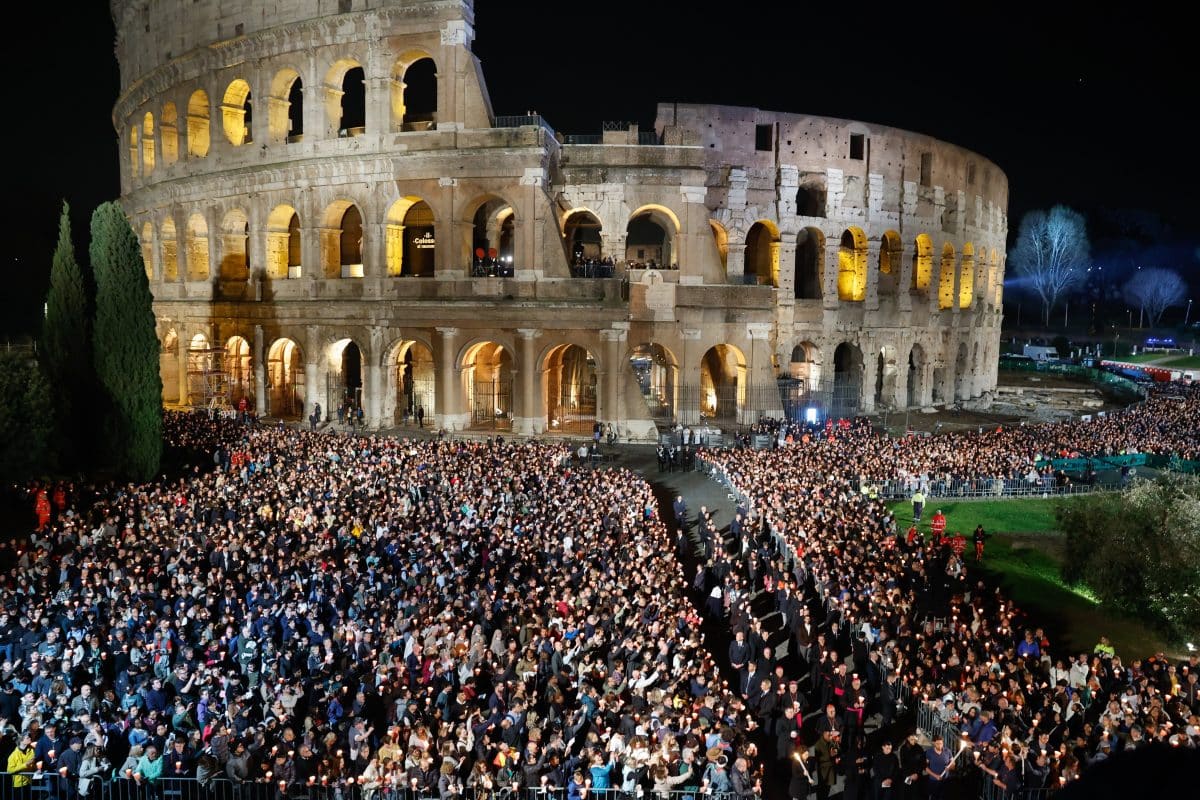
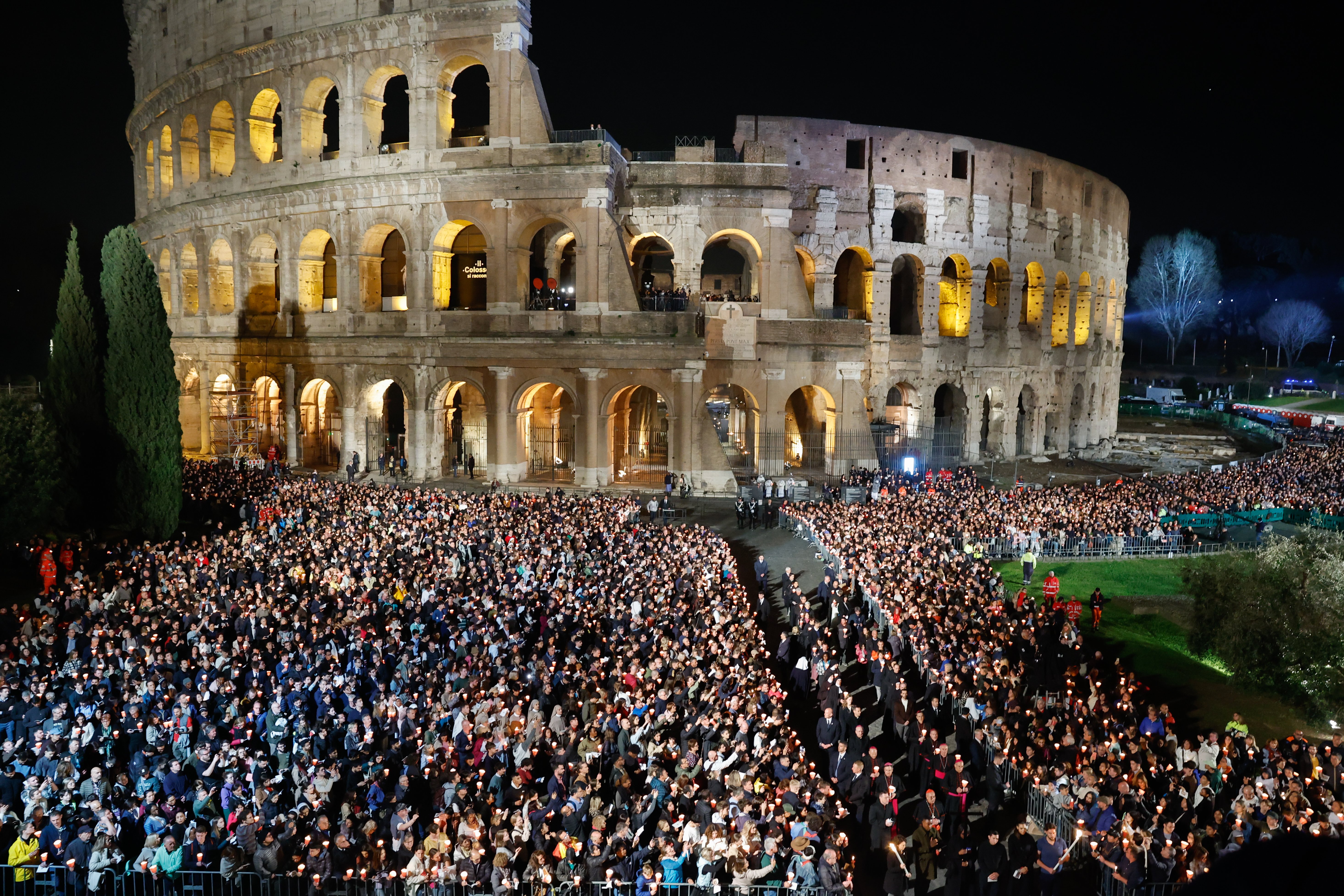
For the second year in a row, Pope Francis followed the nighttime Way of the Cross service from his Vatican residence as 25,000 people gathered outside Rome’s Colosseum.
While he had been scheduled to attend in person, the Vatican released a communique right at the start of the service March 29 that the pope would follow the event at home « to conserve his health ahead of tomorrow’s vigil and Easter Sunday Mass. »
Workers carried away the white chair that had been set up for the pope atop a hillside overlooking the ancient amphitheater and Cardinal Angelo De Donatis, papal vicar for Rome, filled in for the pope, offering the final blessing at the end of the ceremony.
While the late night temperatures in Rome on March 29 were in the low 60s, there was a slight breeze and 45% humidity. The pope also skipped attending the Colosseum event last year after he had been released just six days prior from the hospital where he had spent three nights for a respiratory infection.
Each year, the pope chooses a different person or group of people to write the series of prayers and reflections that are read aloud for each of the 14 stations, which commemorate Christ’s condemnation, his carrying the cross to Golgotha, his crucifixion and his burial.
This year the commentaries and prayers were written by Pope Francis and were meant, during this Year of Prayer, to « accompany » Jesus on his own journey of prayer during his passion.
« Of us, you asked only one thing: to remain with you and to keep awake. You did not ask something impossible, but simply closeness. We now take this time to be with you. We want to spend it in closeness to you, » the pope wrote in his introduction to the solemn torch-lit service in the Colosseum.
« How many times, though, have I strayed far from you! How many times, like the disciples, rather than keeping awake, have I instead fallen asleep! How many times have I failed to find the time or the desire to pray, whether from weariness, distraction or dullness of mind and heart! Lord Jesus, say once more to me and to us, your Church: ‘Get up and pray,' » the pope wrote.
Different groups of people representing different segments of the church and society passed a bare wooden cross from one group to the next in succession. Those chosen to lead the Way of the Cross included minors living in foster homes, people with disabilities, migrants, catechists, priests and cloistered nuns.
Instead of the traditional station for « Jesus falls for the third time, » the pope created a meditation for the 11th Station dedicated to « Jesus’ cry of abandonment, » reflecting on Jesus’ « unexpected » prayer of « My God, my God, why have you forsaken me? »
« At the height of your passion, you experience the distance of the Father; you no longer even call him ‘Father,’ but ‘God,’ almost as if you can no longer glimpse his face. Why? » the meditation said.
« So that you can plunge into the abyss of our pain. You did this for my sake, so that when I see only darkness, when I experience the collapse of my certainties and the wreckage of my life, I will no longer feel alone, but realize that you are there beside me, » it said.
The prayers included asking Jesus to « help me recognize you and love you »: in the unborn and abandoned children; in young people in pain; in the elderly who have been forgotten; in prisoners; and in those who are exploited and ignored.
For the eighth Station, « Jesus meets the women of Jerusalem, » the pope highlighted those who remained with Jesus to the end along the way of the cross.
« Those ordinary people who are great in your eyes, yet small in the eyes of the world. There are the women, in whom you inspired hope: they have no voice, yet they make their presence felt, » the meditation said.
« Help us to recognize the dignity of those women who remained faithful and stood by you in your passion, and those who in our own day are exploited and endure injustice and indignity, » it said.
The pope’s reflection asked people to consider: « When I am faced with the tragedies of today’s world, is my heart frozen or does it melt? How do I react when I see the madness of war, the faces of children no longer able to smile and of mothers who see them hungry and underfed, and have no more tears to shed? »
« Jesus, you wept over Jerusalem; you weep over the hardness of our hearts, » it said, asking people pray to Jesus to « melt my hardened heart. »
For the 12th Station, « Jesus dies, commending himself to the Father and the good thief to paradise, » the pope underlined « the amazing power of prayer » that led a criminal to heaven.
« God of the impossible, you turn a thief into a saint, » it said, because « If you remember me, my evil will no longer be an endpoint but a new beginning. »
The concluding reflection at the 14th Station asked the faithful to think about « what new gift will I give Jesus this Easter? A little more time to spend with him? A little more love for others? »
« It will truly be Easter if only I give something of myself to the One who gave his life for me. For it is in giving that we receive, and we find our lives whenever we lose them, our possessions whenever we give them away, » it said.
Earlier in the day in St. Peter’s Basilica, Pope Francis presided over the Liturgy of the Lord’s Passion, which commemorates Christ’s passion and death on the cross.
The pope arrived in a wheelchair and began the rite after a moment of silent prayer before the main altar, which was framed by covered scaffolding encapsulating the immense baldachin undergoing a 10-month-long restoration.
Following tradition, the homily was delivered by Cardinal Raniero Cantalamessa, preacher of the papal household.
The papal preacher said, God’s power is the power of his humble, defenseless love.
He reflected on how Jesus overturned the worldly ideas people had of God and revealed his true face.
« Unfortunately, in our unconscious, we continue to carry on this very idea of God that Jesus came to change. We can speak of a God who is pure spirit, supreme being, and so on, but how can we see him in the annihilation of his death on the cross? » the cardinal asked.
« The Father reveals the true face of his omnipotence in his Son who kneels before the disciples to wash their feet; in him who is reduced to the most radical powerlessness on the cross and continues to love and forgive, without condemning anyone, » Cardinal Cantalamessa said.
« The omnipotence of God is the omnipotence of defenseless love, » he said.
« What a lesson for us who, more or less consciously, always want to show off. What a lesson for the powerful of the earth, » especially those who pursue power only for power’s sake and those who « oppress the people and, in addition, ‘call themselves benefactors,' » the cardinal said.
Conquering death, the Risen Christ does not seek revenge « to humiliate his opponents. He does not appear in their midst to prove them wrong or to mock their impotent anger, » the cardinal said, because that « would be incompatible with the love that Christ wanted to bear witness to in his passion. »
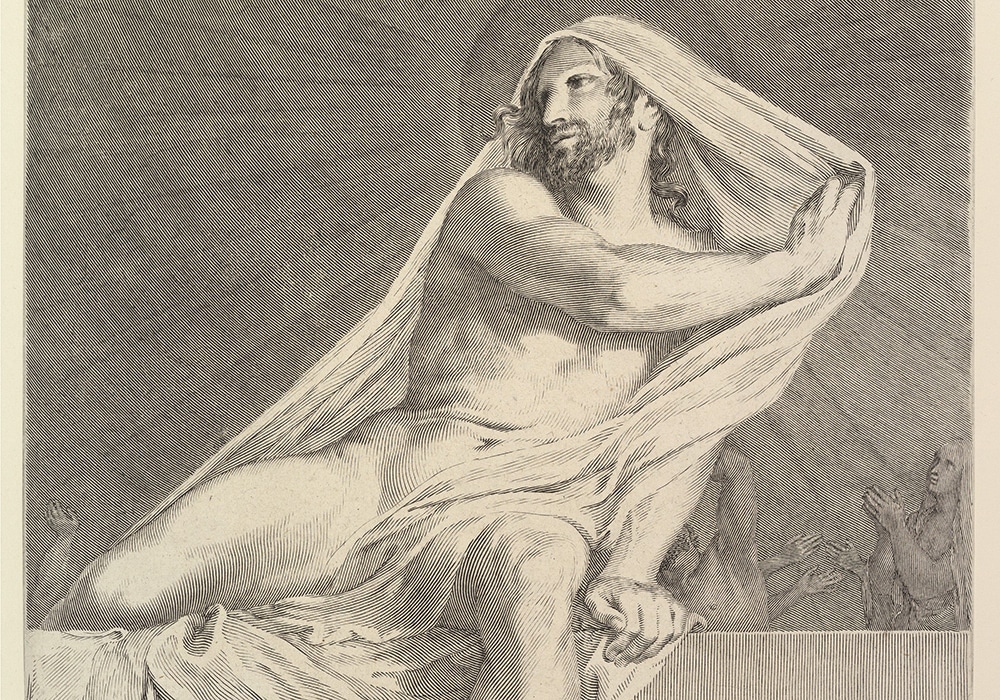

March 31 — the end of another calendar month — ushers in a season of profound hope as Christians everywhere celebrate Easter, the commemoration of Christ’s resurrection. Many times Easter and the Jewish feast of Passover overlap, but not this year. Easter symbolizes new life and often coincides with the spring season in the Northern Hemisphere. Springtime, a season of rejuvenation and rebirth, reminds us that before new life can emerge, the old must first pass away.
Ecologically, the natural world is forever trying to renew itself. The brilliantly colored tree leaves of autumn turn brown, die and fall to the ground, leaving tree limbs bare until new buds burst forth and flower, greening Earth’s landscape once again. Also in the natural world eight living beings shed their skin in the growth and rebirth process: snakes, true crabs, frogs, dragonflies, geckos, spiders, cicadas and humans. Once a snake is free of its old skin, the snake’s colors become bright and vibrant. Some young spiders shed their skins so that their limbs can regenerate. The natural process that nonhuman life goes through is called ecdysis.
Today’s Easter readings highlight three things that need to happen in the lives of Christians if Christians want to participate ever more deeply in the new life of the risen Christ whose divine spirit and power infuses the entire cosmos.
First, if we Christians wish to become an « Easter people, » then we have to clear out the old yeast in our lives. 1 Corinthians 5 focuses on yeast and dough. In this letter, the Festival of Unleavened Bread celebrated at the time of Passover is linked to Easter and the resurrection of Christ. As part of the Festival of Unleavened Bread, the Jewish people had to remove all old leaven from their homes. Leavened bread contains yeast, a living, single-cell organism that, when mixed with dough, causes the dough to rise. Old or « expired » yeast, however, could cause illnesses and even keep the dough from rising. Thus, during the Festival of Unleavened Bread and Passover, the Jewish people were to eat only untainted, unleavened bread.
The reading from 1 Corinthians calls us to get rid of the old, expired yeast in the fabric of our lives so we can become a new fresh batch of dough that, when baked, turns into unleavened bread. Thus, by clearing out the « old yeast » within us and by becoming a new batch of dough, we prepare ourselves to be changed into unleavened bread and essentially, to be transformed into Christ. The question to be explored is this: what in our lives is old and expired yeast that needs to be cleared out?
Second, if Christians wish to participate in Christ’s rising from the dead, then we have to shed, figuratively, our burial clothes. The Gospel reading from John tells the story of Mary of Magdala, Simon Peter, and a beloved disciple discovering that the body of the crucified, dead Jesus was no longer in the tomb where he was laid to rest. Instead, all they found there were Jesus’ burial clothes.
According to the Gospel story, as part of Christ’s rising from the dead, he shed his old burial clothes like the snake that shed its skin, both becoming bright and vibrant. Even though we are among the living, are we wearing burial clothes? What in our lives represents burial clothes? Have we dressed ourselves in these clothes or allowed others to dress us in them? Are we willing to shed these clothes to rise from the dead and become one with the living, wonder-full Christ or are we content to be part of the living dead spiritually, emotionally, psychologically, socially, intellectually? Easter invites us to put on vibrant new garments — essentially, to « put on Christ. »
Third, if Christians wish to be an « Easter people, » sharing in the gift of new life while bearing witness to the resurrection of Christ, then just singing « alleluia » is not enough. Today’s reading from the Acts of the Apostles reminds us that the Divine One anointed Jesus of Nazareth with the Spirit and with power which, in turn, empowered Christ to embrace and live out his holy mission of preaching, teaching, healing and liberating all who were oppressed.
We, too, who walk in the tradition of the apostles, are baptized into Christ. We have been anointed with the Spirit, and we have the same mission as Christ and the apostles. To be an Easter people means to do the work of Easter: to confront and work against hegemonic, systemic and structural injustices while creating alternatives, to shake up the status quo, to welcome the marginalized, to embrace all creation with a healing love. And if we find ourselves like the stone that the builders rejected, then we can rest assured that the risen Christ is alive and well among us and within us.
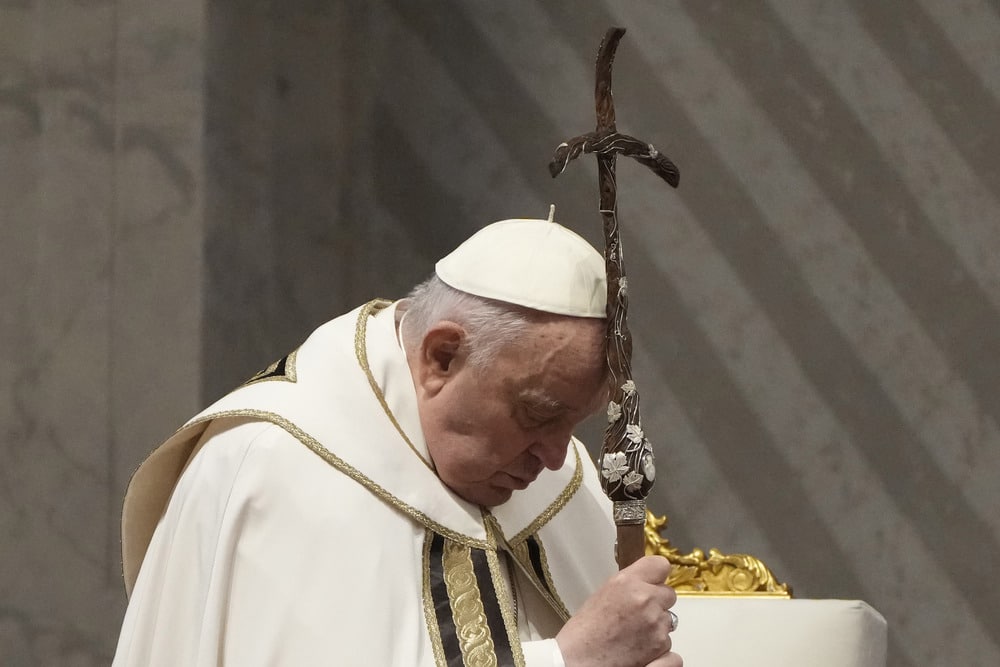

Pope Francis urged his priests Thursday to avoid « clerical hypocrisy » and treat their flocks with mercy as he delivered a lengthy set of marching orders to Rome-based priests at the start of a busy few days leading to Easter.
A strong-looking Francis presided over a Holy Thursday Mass in St. Peter’s Basilica during which the oils for church services are blessed. Later in the afternoon, he travels to Rome’s main women’s prison for the annual Holy Week ritual in which he washes the feet of inmates in a symbol of humility and service.
The 87-year-old Francis, who has been hobbled by a long bout of respiratory problems this winter, appeared in good form for the morning Mass. He read aloud a long homily, after skipping his text at the last minute during Palm Sunday Mass last weekend.
In his remarks, Francis warned priests against « sliding into clerical hypocrisy, » or preaching one thing to their flocks but doing differently in their own spiritual lives. Rather, he urged them to always show mercy to the faithful and not judge them, and weep instead for their own sins.
Doing so, he said, « means looking within and repenting of our ingratitude and inconstancy, and acknowledging with sorrow our duplicity, dishonesty and hypocrisy, » he said.
The Mass was the first major papal liturgy in St. Peter’s since Bernini’s great columned canopy over the altar, known as a baldacchino, was covered in scaffolding for a months-long renovation and cleaning.
Francis has a busy few days coming up that will test his stamina.
On Friday, he is due to travel at night to the Colosseum for the Way of the Cross procession re-enacting Christ’s crucifixion. On Saturday, he presides over an evening Easter Vigil in St. Peter’s Basilica followed a few hours later by Easter Sunday Mass in the piazza and his big noontime Urbi et Orbi (to the city and the world) speech highlighting global conflicts and disasters afflicting humanity.
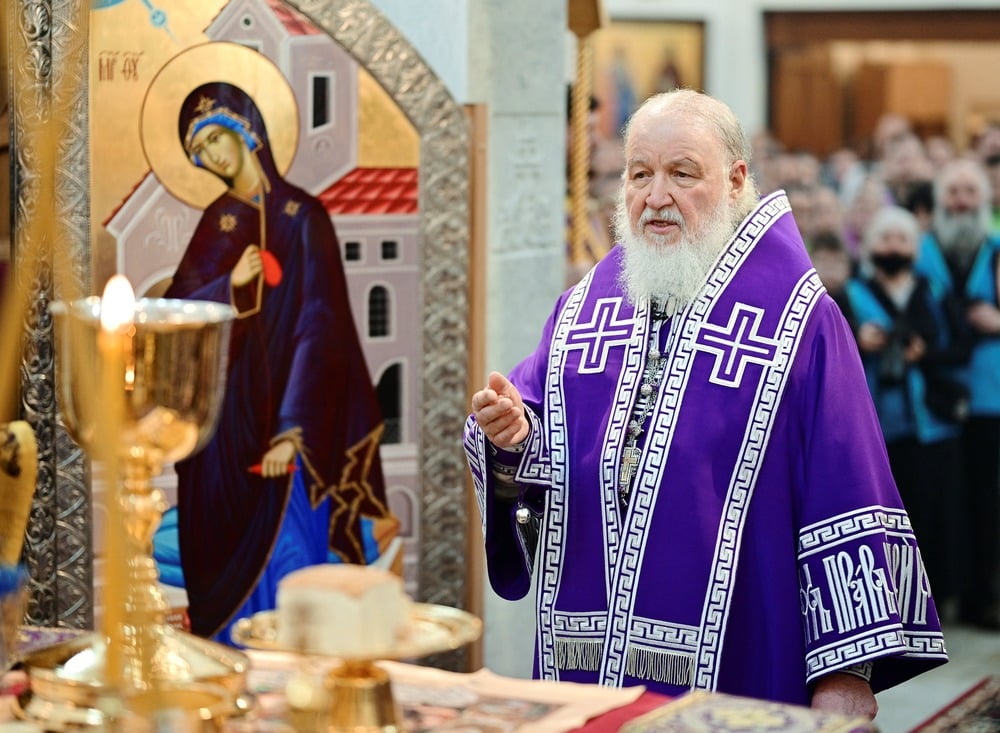

In its first detailed analysis of the Vatican’s pre-Christmas declaration « Fiducia Supplicans, » Russia’s Orthodox Church has accused Pope Francis of « rejecting the Christian moral ideal » by allowing the blessing of same-sex couples.
« While affirming the inviolable understanding of marriage as a union of man and woman … the entire section of the document devoted to these blessings is in radical conflict with Christian moral teaching, » the Russian church said in a March 25 report.
« Although ‘Fiducia Supplicans’ is an internal document of the Catholic Church, the Russian Orthodox Church considers it has a duty to respond to radical innovations that reject the divinely revealed norms of Christian morality, » it said. « While accepting with maternal love every individual sinner who asks for her blessing, the church cannot bless same-sex couples in any form, since this would mean consenting to a union sinful in nature. »
The report, by the church’s Synodal Biblical Commission, comes three months after the Dec. 18, 2023, publication of « Fiducia Supplicans, » which said Catholic clergy could now give blessings « outside of a liturgical framework » to couples in « irregular » and « unsettled » situations.
It said the Vatican’s declaration had changed the Catholic Church’s previously « unambiguous position » on same-sex couples, gaining a « positive response » from sexual minorities and the « liberal wing of the Catholic Church, » but causing « deep disappointment » among « traditional Catholics. »
It added that the document had sought to move away from « merely denying, rejecting and excluding, » but had failed to clarify its terminology, while remaining « completely silent about the sacrament of repentance » and « indirectly legitimizing what, in essence, is illegitimate. »
« God’s love for man cannot serve as a basis for blessing couples in sinful cohabitation, » the Russian report said.
« This declaration says nothing about … renouncing a sinful lifestyle or pastoral assistance to the believer in overcoming sin. … One can conclude from it that a sinful lifestyle does not pose an obstacle to communion with God, » Russian Orthodox leaders said.
« Fiducia Supplicans » (« Supplicating Trust ») on « the pastoral meaning of blessings, » published by the Dicastery for Doctrine of the Faith and signed by its Argentine prefect, Cardinal Víctor Manuel Fernández, said Catholic priests should be permitted to give « pastoral » and « spontaneous » blessings to same-sex and unmarried couples, without « officially validating their status or changing in any way the church’s perennial teaching on marriage. »
However, the proposed blessings have been rejected by numerous Catholic bishops’ conferences and dioceses worldwide, while Egypt’s historic Coptic Church, the Middle East’s largest Christian denomination, announced March 7 it was suspending dialogue with Catholics over the issue, « after consulting with sister-churches from the Orthodox family. »
Theologians from the world’s 14 other main Orthodox churches, together making up around 220 million Christians, also are believed to be studying « Fiducia Supplicans, » including those of Serbia and Greece, which have condemned legislation on same-sex unions.
The Russian church « directly and unequivocally » rejected homosexuality, as « sinful damage to human nature, » and « categorically » denied recognition to « forms of cohabitation outside the previously given definition of marriage. »
Russia’s Orthodox Church backed the July 2020 constitutional amendments enshrining marriage « as a union of man and woman, » and has demanded full implementation of a November 2023 Russian Supreme Court decree banning the « extremist LGBT movement. »
The church’s long-running claims to be defending traditional Christian values have been widely derided in view of its support for the February 2022 invasion of Ukraine.
In its report, the Russian church said the Vatican’s idea of « spontaneous blessings » stood « in radical contradiction with biblical moral teaching. »
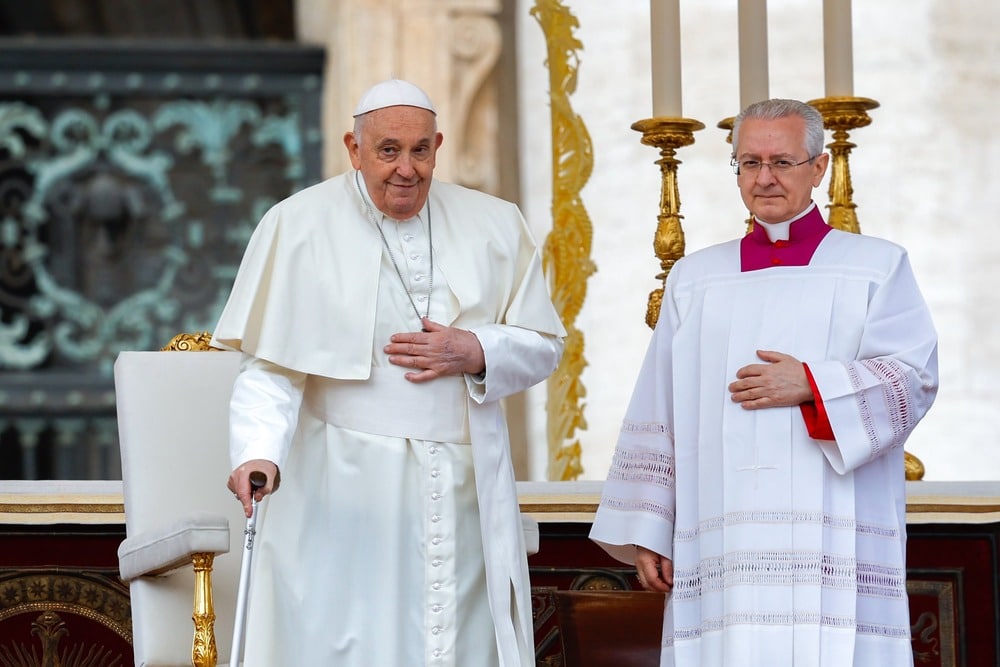

Pope Francis’ planned visit to Venice will include a Mass in the city’s famous St. Mark’s Square, a meeting with young people from the archdiocese and a meeting with female detainees at an island prison where the Vatican has set up its pavilion for a major international contemporary art exhibition.
The pope will travel to and from Venice April 28 by helicopter from the Vatican City State heliport and he will move around the Venetian lagoon by boat, according to details released by the Vatican March 25.
The one-day trip will begin with an early morning visit to the Giudecca women’s prison on Giudecca Island, south of the historic center of Venice. There he will offer remarks and meet prison officials, staff and personally greet about 80 women detained there.
The pope will then visit the prison’s chapel where he will be welcomed by Cardinal José Tolentino de Mendonça, prefect of the Dicastery for Culture and Education and curator of the Holy See’s pavilion for the Venice Biennale art exhibition. The pope will give a speech and greet local officials and artists whose work will be on display.
He will travel by boat from Giudecca Island to the Basilica of St. Mary of Health, a 17th-century church built to honor Mary, invoking her protection and intercession for an end to a devastating plague that killed nearly one-third of the population in the 1630s. The pope will meet with young people and give a speech.
Accompanied by a delegation of young people, Francis will then go to St. Mark’s Square by crossing a so-called « bridge of boats, » a floating pontoon bridge made from boats linked together and a traditional Venetian way of temporarily connecting opposite shores.
Traditionally, the 170-yard-long floating structure is built every year on Nov. 21, the feast of the Presentation of the Blessed Virgin Mary, allowing the faithful to cross the Grand Canal from St. Mark’s Square to the basilica; the tradition began as thanks for deliverance from the plague.
The pope will greet local government officials, celebrate Mass and pray the Regina Coeli at noon in St. Mark’s Square.
He will make a private visit to St. Mark’s Basilica and venerate the saint’s relics before going by boat to a naval college’s heliport to return to the Vatican by 2:30 that afternoon.
It will be the first time a pope visits the Venice Biennale where the Holy See has had a pavilion since 2013.
This year’s pavilion is located at the Giudecca prison, which used to be an ancient convent, and is dedicated to the theme of human rights and to those who live on the margins of society, « where our eyes rarely end up, » the dicastery had said in a press release Feb. 8.
The event runs from April 20 to Nov. 24 with the title, « With my eyes, » inspired by the pope’s insistence that people go outside their comfort zone and pay attention to realities that are ignored and often left out of cultural discussions, it said.
The pavilion will feature works by international artists, including the late Corita Kent, a pop artist and former U.S. member of the Sisters of the Immaculate Heart, and U.S. actress Zoë Saldaña-Perego and her husband, Italian film director and artist Marco Perego-Saldaña.
Francis’ last trips in Italy were in 2022 when he visited Matera for the conclusion of the 27th national eucharistic congress, Assisi for an « Economy of Francesco » event and L’Aquila for the opening of the basilica’s holy door.


The president of the U.S. Conference of Catholic Bishops and the chairman of the USCCB’s Committee on International Justice and Peace called upon the faithful to renew prayers during Holy Week for an end to the Israel-Hamas war.
« As the Church enters Holy Week and Christ’s suffering on the cross and his resurrection are made present to us so vividly, we are connected to the very source of hope. It is that hope that spurs us to call on Catholics here in the United States and all those of good will to renew their prayers for an end to the raging Israel-Hamas war, » wrote Archbishop Timothy P. Broglio of the Archdiocese for the Military Services USA, USCCB president, and Bishop A. Elias Zaidan of the Maronite Eparchy of Our Lady of Lebanon, International Justice and Peace committee chairman, in a March 23 statement.
Israeli attacks in the Gaza Strip have killed more than 32,000 people, including more than 13,000 children, with an additional estimated 75,000 injured, in Israel’s retaliation on the Palestinian territory following Hamas’ Oct. 7 attack on communities along Israel’s southern border. Hamas and other Palestinian militant groups have killed more than 1,100 people and injured more than 8,700, taking more than 240 hostages. A reported 130 hostages remain in Gaza, including at least 33 dead. With Israel restricting Gaza from access to resources, including food, many Gaza residents are facing catastrophic levels of hunger and imminent « famine. »
« Thousands of innocent people have died in this conflict, and thousands more have been displaced and face tremendous suffering, » the bishops said in their statement. « This must stop.
As the Holy Father recently said, ‘One cannot move forward in war. We must make every effort to negotiate, to negotiate, to end the war.’ To move forward, a cease fire and a permanent cessation of war and violence is absolutely necessary. To move forward, those held hostage must be released and civilians must be protected. To move forward, humanitarian aid must reach those who are in such dire need. »
Israel and Hamas have been engaged in mediated talks about a ceasefire and the release of prisoners and captives, with Hamas recently presenting a proposal for a truce. Israeli Prime Minister Benjamin Netanyahu said the proposal was based on « unrealistic demands » and he plans for Israeli forces to invade another area of the Gaza Strip to defeat Hamas, according to media reports.
« As Christians, we are rooted in the hope of the resurrection, and so we pray for a just and lasting peace in the Holy Land, » the Catholic bishops wrote.
Holy Week began March 24 with Palm Sunday of the Passion of the Lord.
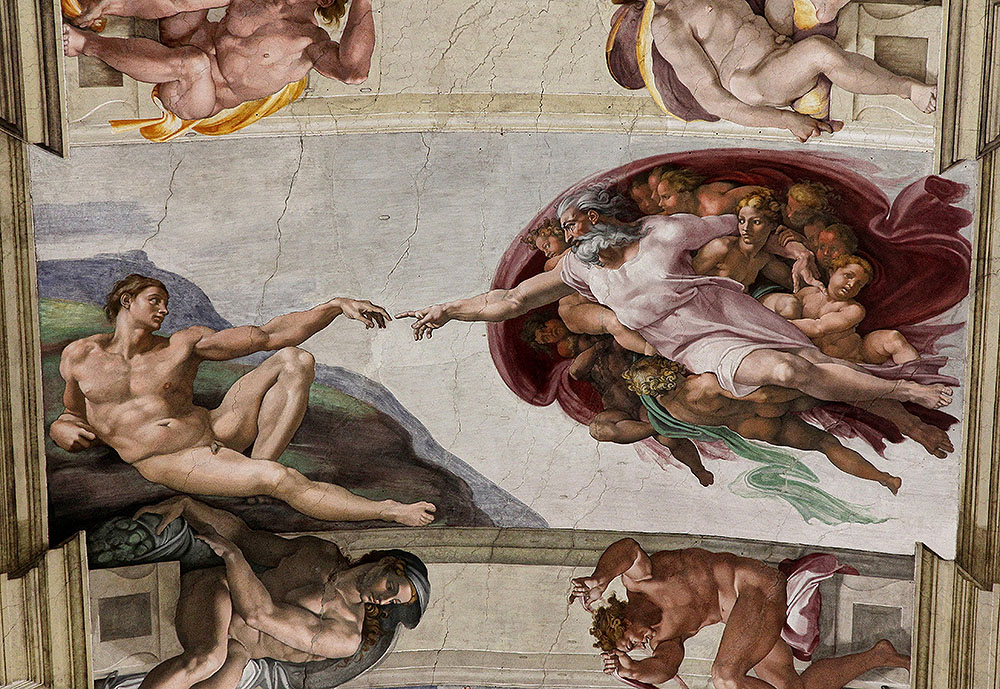

He hasn’t been canonized, but I think of Michelangelo as a sort of saint. William Shakespeare, too — and, for that matter, Emily Dickinson, Sergei Rachmaninoff, Frank Sinatra, Beethoven, Aretha Franklin and Chaucer.
I have no idea how saintly any of these people were in terms of living a moral life. They certainly weren’t saints like St. Francis of Assisi or St. Thérèse of Lisieux. Nonetheless, they have enabled me to connect with God on a deep spiritual level. They were artists, and, in their art they reached beyond the everyday — they reached out into the transcendent, into the mystery that is the Divine.
God has a great many ways to touch me. Through people, of course — my family, my friends, anyone whose path I cross. Through the Bible and its lessons, through the church and its teachings and the sacraments. Through nature and the cosmos.
Art, for me, is an unofficial sacrament. I suspect I’m not alone in feeling this. Art of whatever kind is a very special way that I can get a glimpse of God, that I can stretch and be touched by God.
All of art is aimed at expressing what can’t be expressed, to say what can’t be said.
Think of Michelangelo’s fresco on the ceiling of the Sistine Chapel in which God, with a big, thick beard, is reaching out with one finger to touch the outstretched finger of the naked Adam. In creating this image, Michelangelo wasn’t copying something he’d seen in nature or on the streets of Rome. He was using his imagination to picture a way of communicating this moment of creation.
He pushed his mind and spirit and talent beyond the known, and, in doing so, he took the risk of creating. And he created an image that has resonated with believers and nonbelievers alike for more than 500 years. It’s an image that seems to capture not just the story of Adam’s creation but also the way God stretches to touch me throughout my life.
I am a big fan of Shakespeare’s play « King Lear » in which an elderly monarch tumbles from the height of power because he acts like a bully and can’t tell his enemies from his friends. He learns much about himself and how to love, but this is a play without a happy ending.
Shakespeare went deep inside himself and his lifetime of experiences to create this tragedy that deals so profoundly with what it means to be human. He pushed himself to delve into that mystery. And every time I see the play, I get new and deeper insights into myself and everyone else who’s human. In gaining these insights, I gain insights into God who created us all.
All of art is aimed at expressing what can’t be expressed, to say what can’t be said.
When Aretha Franklin or Frank Sinatra sang, they pushed their talent to go where other performers weren’t able to go — to find new ways to express emotions and experiences, ways that went beyond what words could communicate.
When Rachmaninoff wrote his Piano Concerto No. 2 in C Minor around 1901, he was working to put into the notes and melodies his own feelings and experiences. And from the moment I first heard the concerto, it expressed my own feelings and experiences with the mystery of living — which is the mystery of who I am and how I connect with God.
The composers, writers, singers and artists living today are doing the same thing. By stretching themselves and their talents, by risking to find new ways into the riddle of life, they help me understand myself and the rest of humanity and our daily dance with God.
Advertisement
When my brother-in-law Steve died, we had a memorial service for him, remembering him as a conscientious objector during the Vietnam War, as a fierce environmentalist and as a guitar player who loved music. At two points in the service, his two sons and one of his college friends strapped on their guitars to play songs he loved while his nephew Sean provided a quiet counterpoint on his mandolin.
Sean is a professional bluegrass musician who can really let it rip on stage. But here, at this moment, he was fitting his music behind, underneath and around the guitars. He was providing grace notes, as it were, to their main melodies.
I was struck by the humility of his playing, and the aptness of it. He was stretching his talent not out, but in. He was finding a way to enhance the music of the less polished guitar players. It was as if, in creating this musical setting, he was expressing without words how God was holding the guitarists — and everyone at the service, and Steve, too — in the palm of God’s hand.
I doubt Sean thought of it in those terms, but that’s how I experienced it. Sean, like Michelangelo and Shakespeare and all the artists of the past and all to come, was finding a way to say what couldn’t be said.
And that seems saintly to me.
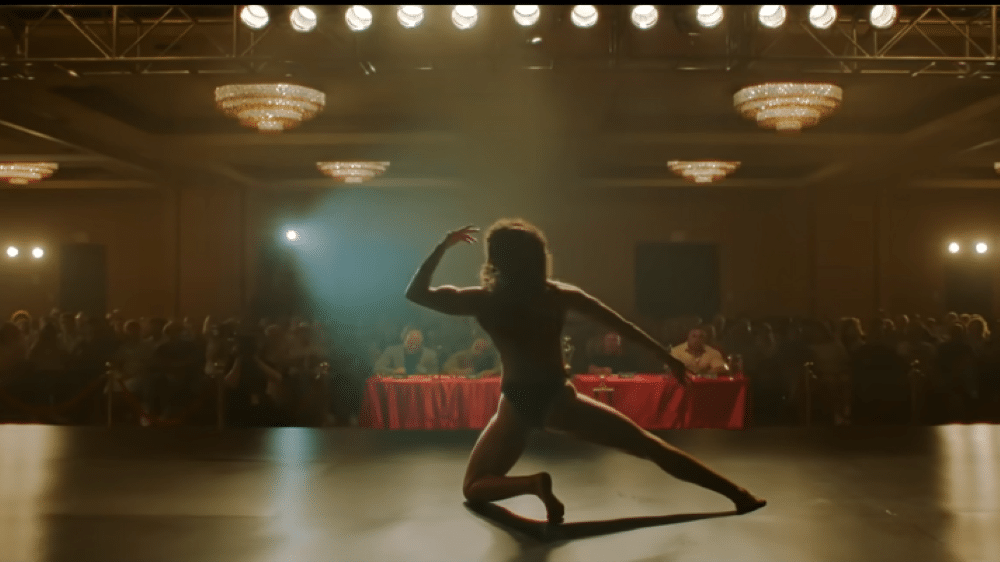

You won’t find a better visual encapsulation of 1 Corinthians’ « your body is a temple » than in the opening sequence of director Rose Glass’ revenge thriller « Love Lies Bleeding. »
Set in 1980s New Mexico, in the type of small desert town that seems to be comprised only of vast stretches of empty road, viewers watch a tour of a gymnasium managed by the reclusive Lou (Kristen Stewart). Glass and cinematographer Ben Fordesman imbue religious imagery into this documentation, framing the fitness patrons’ care of their bodies as an act of faith and love.
Set to Clint Mansell’s haunting score, there’s a worshipful and intimate beholding of what the camera captures: from drops of sweat sliding down a pulsating bicep to a group of indoor cyclists breathing heavily in discordant rhythm. Between these workouts, Glass weaves in shots of the posters adorning the gym’s walls, loaded with cheesy motivational phrases like « Pain is weakness leaving the body. » There’s an almost liturgical call and response dynamic in this editing and a Scripture like reverence for these aphorisms. What we witness is more than just a community, but a congregation amidst prayer and worship. It is spiritual imagery grafted upon characters caught in the throes of desire.
Ultimately, « Love Lies Bleeding » explores the violent power of affection, in particular the toll such passions place on our bodies. To commit to someone is a messy and beautiful thing and between the barbells and exercise mats, Glass tells a cautionary tale on the cost of this commitment. Her film is a sweaty and bloody exploration of what is lost and gained when two try to become one flesh.
Things take a turn to the passionate and incendiary when Jackie (Katy O’Brian), a bodybuilder on her way to a competition in Las Vegas, steps into Lou’s gym. To say Lou falls head over heels for Jackie is an understatement; when she notices two gym patrons talking to Jackie, out of jealousy, Lou announces that the gym is closed and orders everyone to leave. Jackie is one of the last to step out and just before she does, she and Lou lock eyes. The two are standing on opposite sides of the gym, each illuminated by a single bulb above them as if to symbolize how, in the darkness and dreariness of life, they find the light in each other.
The two soon strike up a relationship and Glass tenderly chronicles their love as they dote on each other throughout their quotidian tasks. These scenes are shot with a handheld camera, giving a sense that we viewers are in the room with them in their intimacy. In these moments the stress and pain of the outside world comes to a standstill as the two revel and rest in the unique sense of being known and held in the gaze of another.
However, there is a dark side to such love, and Glass spends the rest of the film exploring the consequences of total devotion. Jackie and Lou’s love is complicated by the fact that Lou Sr. (Ed Harris) is a crime lord who smuggles illegal weaponry into New Mexico. As much as Lou wants to keep this part of her life hidden — or at the very least, dictate for herself how much Jackie learns about her past — the closer the two get, the more Jackie is pulled into the violent orbit of her life. It implodes in a macabre manner when out of love and in a steroid-induced daze and state of rage, Jackie murders Lou Sr.’s operative.
It is the aftermath of this grisly murder where Glass’ film dives into the messiness that comes when we embed our lives with others and how ascribing salvific qualities to those whom we hold most dear ultimately undoes the very bonds of our relationships.
After Lou disposes of the body, she tells Jackie that they have to lay low as the cops (who are all on Lou Sr.’s payroll) will do everything they can to find the culprit. The two get into an argument as Jackie realizes that this means she can’t attend the bodybuilding competition that she dreamed of. Her violent choice, though made out of love, comes at great cost. Jackie and Lou realize that in order to be with each other, they will have to sacrifice and step into the mess of each other’s lives, and such dedication is costly.
As Lou Sr.’s forces close in on the two, Lou finds herself returning the favor as she murders more than a few lackeys to protect Jackie. These actions intertwine Jackie and Lou’s lives in ways not easily untangled. This is captured in another surreal moment when Jackie, against Lou’s wishes, decides to leave town to attend the bodybuilding competition. During her showcase, Mansell’s score swells rapturously as if to cheer her on before the scene cuts to a shot of a victim Jackie brutally murdered. Jackie, haunted by what’s she’s done, stumbles and breaks form. She begins convulsing and in a surreal moment, vomits up Lou onto the bodybuilding stage. It’s a clever showcase of how the two are involved in such a way in each other’s lives that they can’t easily separate from each other. After watching « Love Lies Bleeding, » another verse came to mind: the apostle Paul’s famed description of love in 1 Corinthians 13:7: Love « bears all things, believes all things, hopes all things, endures all things. »
Even amidst the carnage, Jackie and Lou’s love for one another embodies aspects of this. The tragedies that unfold are a reminder that love transforms all who are involved. It requires you to give something of yourself, and you can’t hope to walk away unchanged after giving of yourself so deeply to another.
In this way, the film both celebrates the power of affection but also reminds us to be wary about who and what we give the totality of ourselves. If you’re going to love someone, do it fully and well. But remember to count the cost.